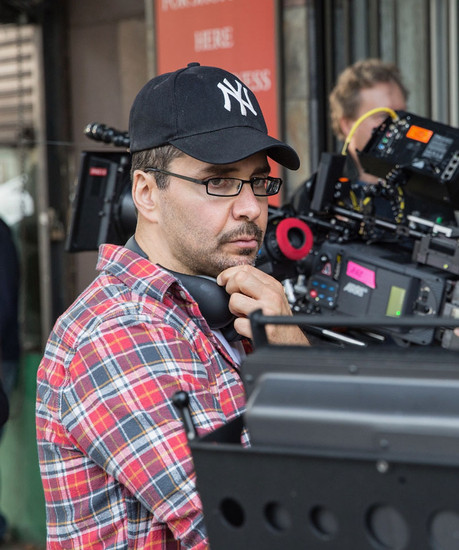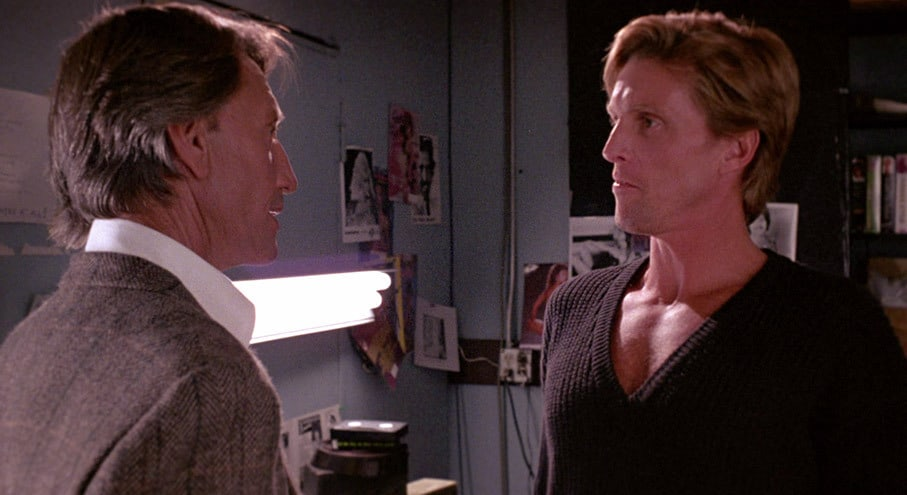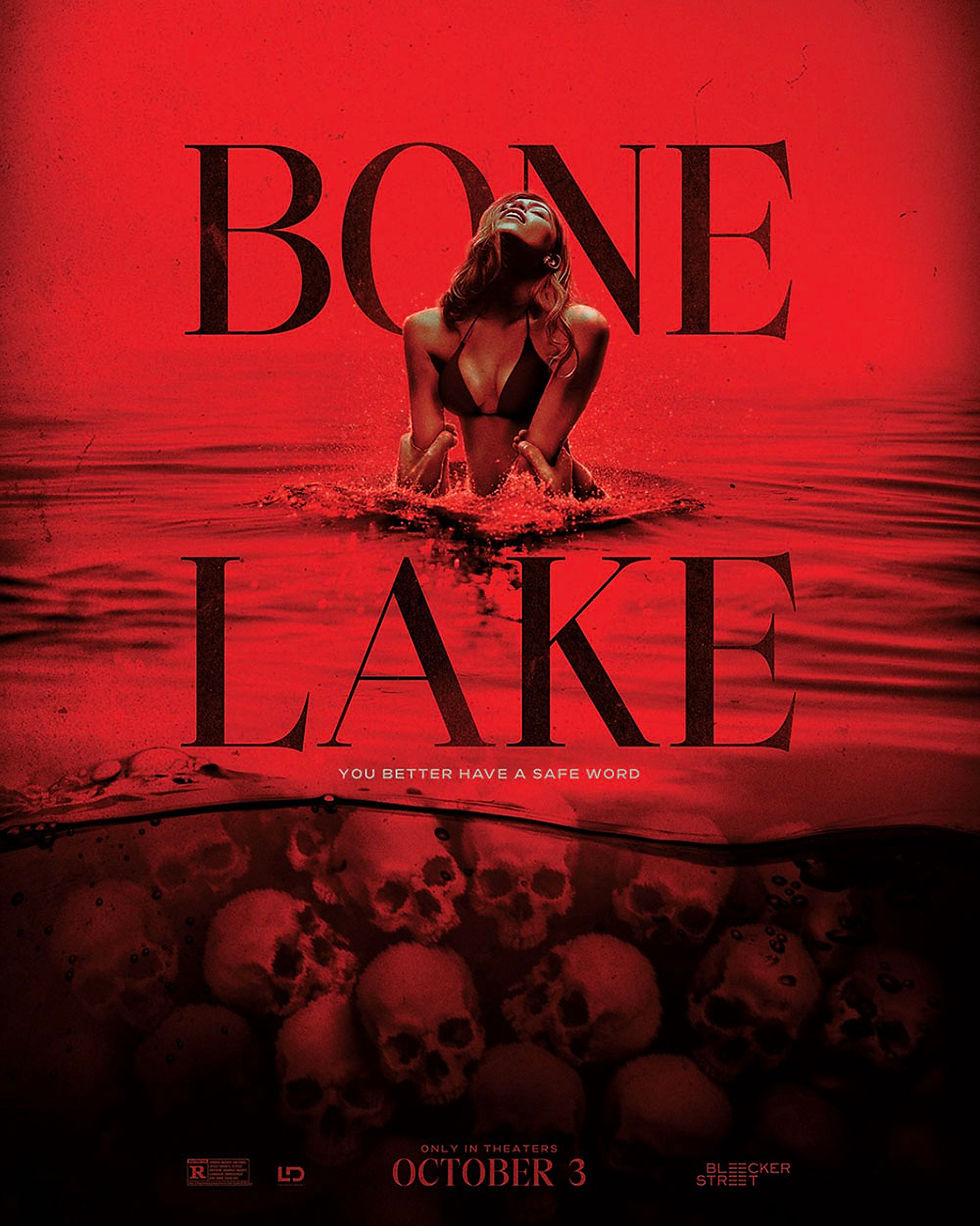Community Service: James DeMonaco for THE HOME
- Rich

- Jul 23
- 11 min read
Evil never gets old

American writer, director and producer James DeMonaco is perhaps best known for creating The Purge movies that have grown into a hugely successful franchise over the years. Often dressing genre filmmaking with social and political themes, DeMonaco still manages to bring the horror and action front and centre. With his most recent film, The Home, Pete Davidson, — far away from his SNL roots — plays Max; a rebellious twentysomething sentenced to community service at a quiet retirement home. It’s an intense performance from Davidson as the film delivers an almost unbearable sense of dread before unleashing a thrill ride of terror. Taking time out from his busy schedule, DeMonaco discussed the impetus of his latest project along with his background and influences including his growing up on Staten Island and love of cinema.
How did the idea for The Home come about?
The concept for The Home emerged during the early days of Covid, a time that felt both eerie and profound. My writing partner and I — both naturally inclined to neurosis — found ourselves discussing the themes of mortality, largely influenced by the tragic news surrounding elder care facilities grappling with the pandemic’s toll. Both of us also had unsettling childhood experiences in retirement facilities and this all sparked the idea of crafting a horror narrative within those walls.
Behind THE HOME. Writer/directors James DeMonaco with lead Pete Davidson Photos courtesy of Courtesy of Man In A Tree and Roadside Attractions.
At the same time, my wife — determined to instil healthier habits in me (I eat a lot of Italian food) — encouraged me to explore yoga. This new venture led me down a rabbit hole of wellness and longevity content on YouTube, transforming my feed into a trove of health-focused insights — some real, some super bizarre. I believe the juxtaposition of elder care and the burgeoning wellness movement, combined with my broader concerns about climate change, coalesced into the premise of The Home.
What attracted you to making a psychological horror this time around?
I’ve always viewed the Purge films more as action thrillers than pure horror — more akin to classics like Escape from New York or The Road Warrior. I was really motivated to do something different this time around… and so I felt like it was time to dive into true psychological horror; a genre that has always deeply resonated with me and also led to a lot of sleepless nights in my youth (I’m prone to night terrors to this very day and I wonder if it’s from all the ’70’s psychological horror films I watched!) As a young man I was captivated by the great psychological horror films of that decade such as Don’t Look Now, Carrie, Suspiria, Rosemary’s Baby, The Tenant, Let’s Scare Jessica to Death, Burnt Offerings, etc.
It’s clear you love cinema — 2021’s This is the Night a prime example — and always appreciate the references, whether intended or not. Were there any particular influences you drew inspiration from or in terms of movies to refer to as a shorthand while in production?
Absolutely. My primary source of inspiration — one that I openly shared with my crew — was Robert Altman’s 3 Women. To me, it stands as one of the quintessential psychological horror films — a masterpiece of tension, atmosphere, and surrealism. On set, I often played the haunting Gerald Busby score to immerse everyone in that chilling mood. My director of photography and I meticulously analysed Altman’s use of the zoom lens, which creates an unsettling sense of dread — an effect I wanted to replicate in The Home. Additionally, Rosemary’s Baby and The Tenant were significant influences that helped shape our approach and we aimed to channel that same eerie authenticity in our work.
“I felt like it was time to dive into true psychological horror; a genre that has always deeply resonated with me and also led to a lot of sleepless nights in my youth…”
— James DeMonaco
Interesting, hence why there is slow burn feel to this film that reminds us of works, but boy does it erupt in that final act. Was it a challenge to hold back so much?
Absolutely! We filmed the finale last, and let me tell you, the entire crew and cast were practically bursting with anticipation to dive into those explosive, wacky, blood-soaked final 25 minutes. There was something oddly exciting about restraining ourselves and waiting; we were all giddy with excitement, especially Pete and me. This approach — in saving the climax for the end — proved to be incredibly rewarding. It heightened the sense of anticipation and infused the earlier work we did with an energetic undercurrent, setting the stage for that final grand eruption of blood and madness. It’s a testament to how building tension up front can amplify the payoff, creating a better experience for both us (the crew and actors) and hopefully the audience.

Where it begins. Ethan Hawke in James DeMonaco's debut STATEN ISLAND (2009).
You have said in the past that your childhood was “Stand by Me meets Goodfellas.” No wonder such a tough world and upbringing spills out into your films. I’m interested to hear, specifically, what you think it is about an “island mentality” that shapes a community and individuals.
In my first directorial venture, Staten Island, New York, I explored the theme of Staten Island as the “forgotten borough” of New York City. There’s a strange sense of self-imposed unworthiness among Staten Islanders — including myself — that stems from feeling ignored and overlooked here in this big city. While I can’t speak for all Islanders, my personal experience leads me to wonder whether this sentiment subtly infuses my work and shapes my personality in some way.
Growing up on Staten Island’s South Shore, which is primarily home to Italian and Irish American working-class families, I navigated a landscape heavily influenced by hyper-masculine culture. The ’80s and ’90s were a fascinating yet intimidating era in which I often found myself in close proximity to very tough guys — their behaviour was both interesting to witness, intimidating at times, and straight up scary to get too close to. Many young men idolised the gangster lifestyle, inspired by the very real mobsters who lived nearby (some right on my block and many in the neighbourhood), along with small screen and cinematic portrayals — from Mean Streets to The Godfather and later, Goodfellas and The Sopranos.
This brings me to consider a possible correlation: the notion of the forgotten borough breeding not just a sense of invisibility, but also an intense drive for recognition, manifested in a hyper-masculine culture — a yearning to be seen and acknowledged in a world that often overlooks.
How did the island shape you and lend a unique perspective?
Growing up on the island, I never quite embodied the toughness that characterised many of the guys around me. However, I was deeply immersed in their world, absorbing their language and closely observing their interactions. I believe this proximity influenced some of my crime writing.
At 17, I found myself caught in a brawl at a train station, an experience that left me with a range of injuries — most notably, a series of bites (yes, human bites) — which led to a lengthy hospitalisation due to infection. This transformative event led to some deep introspection regarding my life, the nature of violence, and human fragility. Ultimately, these reflections have woven their way into both my writing and filmmaking, informing my perspective, which I hope resonates with others.

“Keep America Great.” Oh, how THE PURGE (2013) resonates.
In light of such personal experiences and circumstances, I always appreciate how much you focus on a class system and how it fights back while still managing to create entertaining genre pieces. It’s always on the surface. With your experience creating The Purge franchise and now with The Home, what do you think the key is to making satire so entertaining and not sending an audience to sleep with heavy political messages?
Audiences generally don’t want to feel as though they’re being lectured or preached to. When embedding socio-political messages within a film — much like the great genre filmmakers; such as Romero and Carpenter’s movies — I believe it’s important to preserve the genre film’s core purpose: to entertain and thrill. Some horror, sci-fi and action films could also spark thought, stimulate debate, and ignite conversation, but achieving that requires a delicate balance.
I’ve stumbled in this regard before; at times, my politics seeped too deeply into my genre writing, veering into the territory of proselytising instead of simply presenting ideas or concepts. In those moments, I think I lost the balance and inadvertently alienated my audience by preaching. Ultimately, it’s about delivering a compelling story while subtly inviting viewers to ponder deeper themes without feeling overwhelmed.
I understand you also spent time in Paris. I’m interested to hear how that may have changed your perspective, especially when it comes to approaches in filmmaking.
During my time in Paris, I found a cinephile’s paradise — as it’s a haven for film lovers. The city is dotted with charming, meticulously maintained theatres, each showing a range of films: classics, experimental pieces, and everything in between. I embraced the cinephile culture there, feeling a great sense of belonging.
What’s particularly striking is the French appreciation for genre films; their love extends beyond classic cinema to genuinely valuing awesome genre fare. It was in Paris that I realised the beauty of embracing all facets of cinema — the classics, the French New Wave, B-movies, action films, ’80s slasher films, etc. All of cinema is the canvas from which we can love and learn.
“Ultimately, it’s not about ego; it’s about serving the film and prioritising its needs above all else — a great lesson I took away from my experiences in Paris.”
— James DeMonaco
I also learned an invaluable lesson about discourse. In America, I often found that confrontations can lead to lingering animosity — debates tend to happen behind closed doors, and disagreements can end relationships, particularly in Hollywood. In contrast, the French embrace spirited debate; heated arguments can occur one moment, only to dissolve into laughter over a shared meal and a glass of wine in the next. This approach to creativity also resonates with me as an Italian as I love to eat! My producing partner, Sebastien Lemercier — who is French-German — and I frequently engage in intense discussions on set, during editing, and throughout development, often raising eyebrows from crew members with our heated exchanges. Yet, moments later, we’ll be breaking bread and sharing laughs. Ultimately, it’s not about ego; it’s about serving the film and prioritising its needs above all else — a great lesson I took away from my experiences in Paris.

Behind closed doors. Pete Davidson returns to horror.
You wrote the film for Pete Davidson to star in. What did you see in him to pull off such a different role from his SNL work?
I knew Pete from the neighbourhood. We are both Staten Island guys — on the South Shore — and it’s a small world over there. He was a busboy at a restaurant I used to frequent — Nucci’s South — and he approached me after The Purge opened and said he enjoyed the film. We stayed in touch, became pals, and close friends. What I see in Pete is a side that the public seldom witnesses a — truly soulful young man who has faced significant challenges. I knew he could do this film — embody this character — I saw hints of his drama acting chops in King of Staten Island and Big Time Adolescence, but even before those films I knew he had it. He’s a wonderful soul. We’ve actually been writing together and I can’t wait to see where that leads.
He's fantastic in the film and almost erases anything funny about himself. I’m interested to hear about how he approached the role and the ideas he brought to the table.
Pete operates on pure instinct. After reading the script, he called me immediately to express his confidence in taking on the role. I always knew he had the talent, but I wanted to gauge whether he felt a visceral connection to Max, the character he would play… and he did. Having faced similar challenges in his own childhood, he identified with the trauma that Max endures. Additionally, his passion for horror mirrors my own, so we speak the same language. We both work from our gut, trusting our instincts, avoiding overthinking, and embracing the emotions of the narrative. Hopefully it worked.
You also had the pleasure to work with John Glover who is such an underrated actor, yet always unforgettable in everything he’s in. Tell me about his casting.
I love John Glover. Always have. He’s a true gem of an actor, and his performances are always memorable. When it came to casting, my co-writer Adam Cantor and I typically don’t envision specific actors until we’ve finished a draft of the script. However, John was one of our earliest considerations, even before we completed the first draft. Adam had a strong familiarity with John from his work on Smallville, while I had been freaked out by John’s performance in Frankenheimer’s ’52 Pickup back in the mid ’80s — a film and performance that left a lasting impression on me.
A touch of class. Character actor John Glover in SMALLVILLE (2002-2011) and '52 PICKUP (1986).
When Adam first suggested John, I was immediately on board; he seemed like the ideal choice for the role of the retired off-Broadway actor residing in the retirement home. John brings a blend of nuance, subtlety, humour, mystery and unpredictability to his work. He is not just a kickass actor but also a fantastic collaborator and a blast to work with. He has a dedicated fan base who I think will be thrilled with his portrayal of Lou in this project — he commits fully to the role and doesn’t hold back in his performance. He goes all in, shamelessly, and doesn’t pull any punches.
“My love for chaos and unpredictability drives me, but I believe in the importance of thorough planning, rehearsal, and choreography — repeatedly — and I can’t emphasise that enough.”
— James DeMonaco
I’m interested to hear how you approach the direction in your films, especially when you release the beast. There is a particular energy at play with you. How complex is the staging and setting up of the practical effects before you roll?
I prefer my action sequences to be messy, dirty, and carry a hint of chaos — less like a meticulously choreographed ballet, such as in the John Wick movies (which I really admire — but that’s not my personal style), and more organic and raw. However, even in embracing that chaos, there’s a rigorous choreography behind the scenes. Both the actors and camera movements are carefully planned to create a sense of disorder while ensuring safety. It’s a delicate balance, as capturing the desired mayhem is not easy.
Strap yourselves in. Pete Davidson as Max and Bruce Altman as Dr. Sabian.
My love for chaos and unpredictability drives me, but I believe in the importance of thorough planning, rehearsal, and choreography — repeatedly — and I can’t emphasise that enough. I tend to shy away from relying on visual effects for elements like blood or storm effects. Too often; I hear promises from those who control the budget regarding post-production fixes (“you can fix it in post”!), but when the time comes, financing constraints can lead to those commitments vanishing.
Ultimately, I find that practical effects, like blood-bags and squibs, look more authentic than their digital counterparts. While they may require extra time and effort, in my experience, they deliver results that resonate more on screen. They just look freaking cooler.
What do you hope audiences take away from watching the film?
What I genuinely hope audiences take away from this film is an engagement with Max’s character and the enigmatic atmosphere of The Home, which I tried real hard to steep in creepiness. I hope the film thrills them, scares them, freaks them out, and adrenalises them. I hope the third act twist shocks the hell out of them, delivering an unexpected turn of events. And I hope they are squirming in their seats (as I still do!) from some of the bizarre body-horror imagery. Beyond the surface, I hope that some recognise the deeper themes woven throughout, prompting thoughts on the legacies of past generations and their impact on the future. I don’t want to disclose what the film means to me (as watching a movie is a personal experience for every viewer)… but I hope some people see my deeper intentions.
The Home is released in the US on July 25th (Theaters/Tickets) and will premiere at London FrightFest, August 21st. Instagram: @roadsideattractionsfilms, @lionsgatehorror, @lionsgate.























Comments